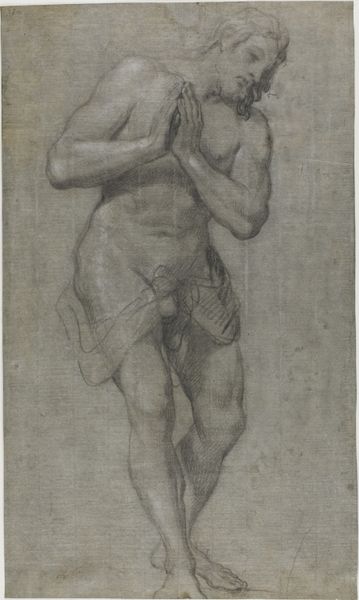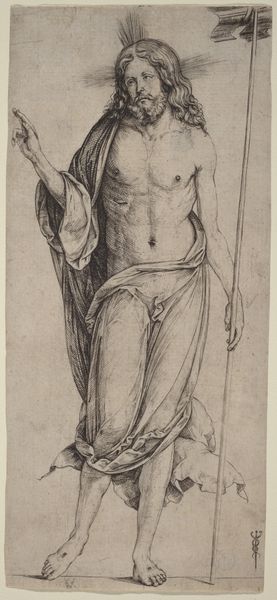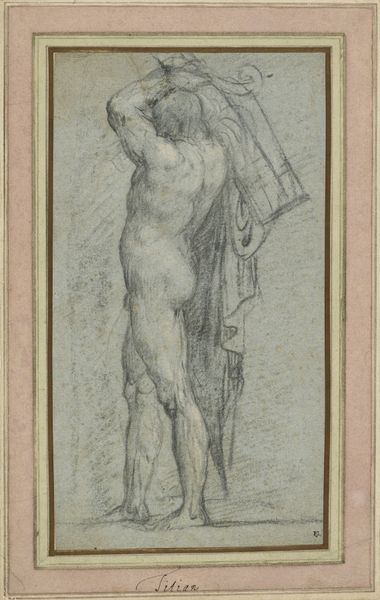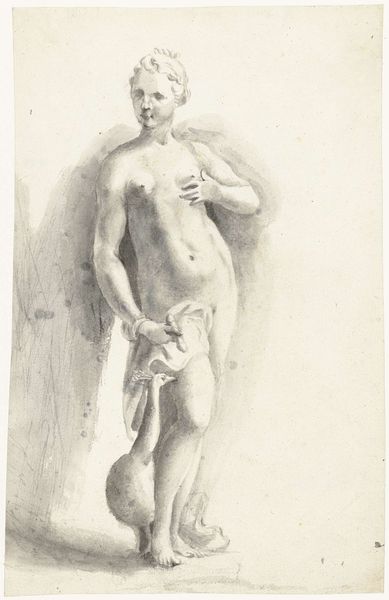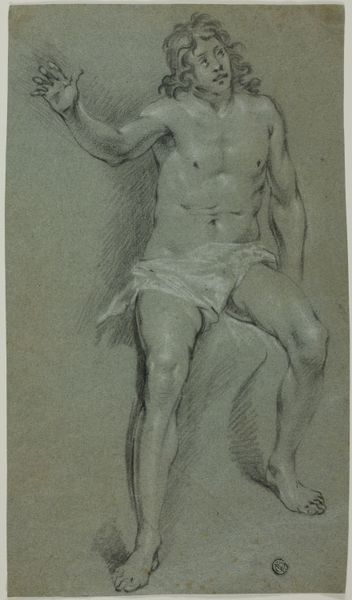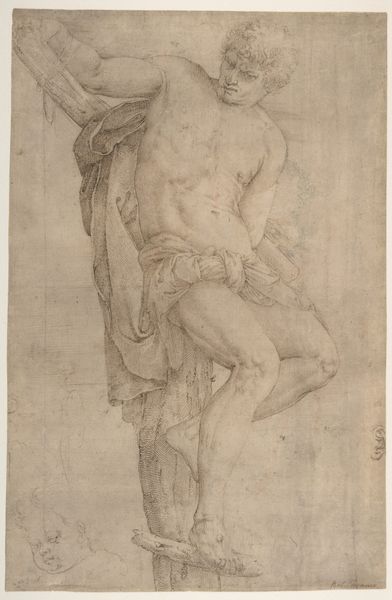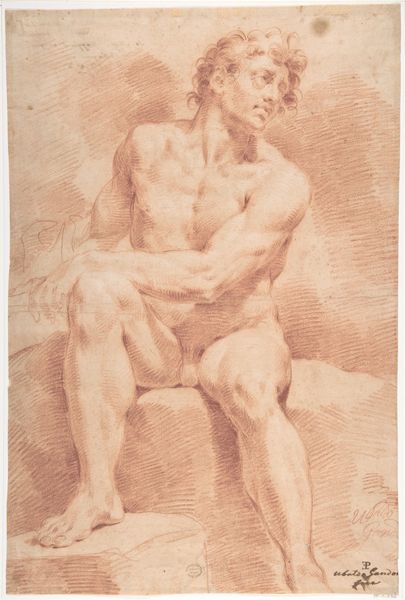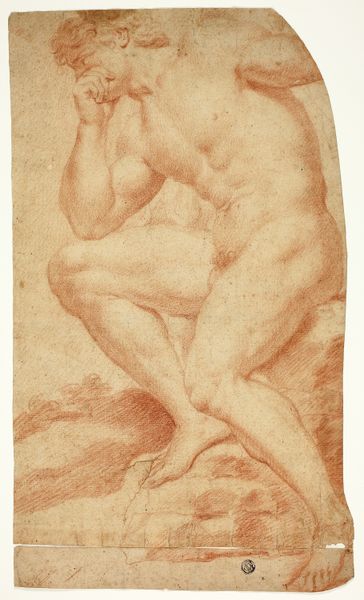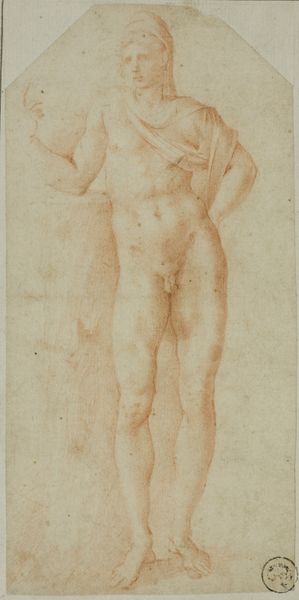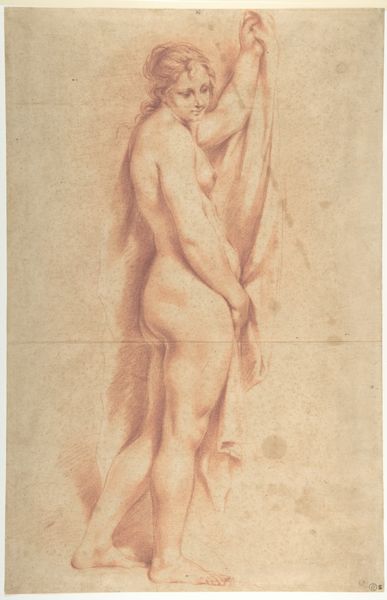
drawing, paper, pencil, chalk, graphite, charcoal
#
drawing
#
charcoal drawing
#
figuration
#
paper
#
11_renaissance
#
pencil drawing
#
pencil
#
chalk
#
graphite
#
charcoal
#
history-painting
#
realism
Dimensions: 421 × 225 mm
Copyright: Public Domain
Editor: So, this drawing is called "The Risen Christ." It's attributed to Michelangelo and is from the 18th or 19th century, made with charcoal, pencil, and chalk on paper. I'm immediately struck by the figure's musculature; it’s so idealized, but also vulnerable, don't you think? How do you interpret this work, considering its subject and the artist's approach? Curator: What I see here isn't just a religious depiction; it’s a representation steeped in the power dynamics of its time. How does the classical idealization of the male form reinforce, or perhaps subvert, traditional notions of power and divinity? Think about the social and political structures in place when this was created. What role did the Church play, and how might an artist, even one as revered as Michelangelo, engage with or challenge that authority through their artistic choices? Editor: That’s interesting. I hadn't thought about it in terms of power structures. The figure seems very static and idealized to me, almost removed from the earthly struggles. Curator: Exactly. And is that a removal, a kind of disengagement, a privilege? Where do we position this work in its social context? What is glorified, and conversely, what is silenced? How might the Black or Brown bodies in his social context be rendered instead? Editor: That really makes you think about who gets to be represented, and how. I’m so used to seeing these religious figures portrayed in a certain way that I hadn’t questioned it before. Curator: And that is the crux of the issue, isn’t it? Representation, access, privilege. Let us look more deeply at what stories are being told, who is telling them, and whose voices are being left out of the narrative. Editor: I learned so much today about really questioning the visual language and thinking about power and privilege in relation to art! Curator: Indeed, viewing this artwork critically reveals not only its beauty, but also how historical narratives shape our contemporary understanding of faith and identity.
Comments
No comments
Be the first to comment and join the conversation on the ultimate creative platform.
